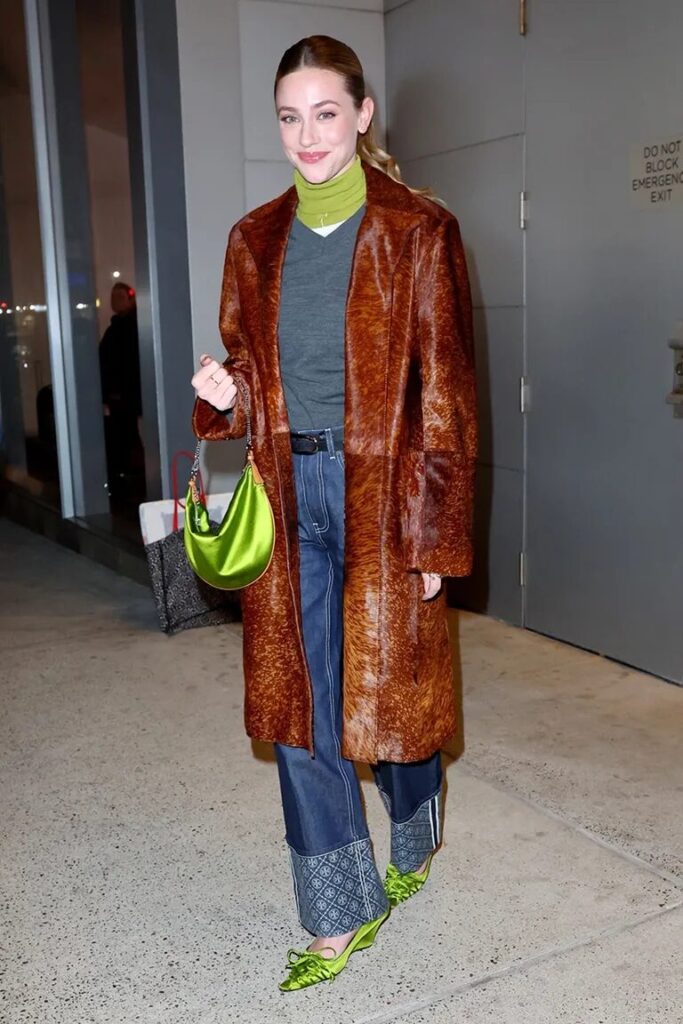The Lili Reinhart skincare market entry actually demonstrates how brands can still succeed despite all the saturation challenges that exist right now. The actress launched Personal Day back in October 2024, and she was targeting acne-safe products in an industry where strategy increasingly demands real authenticity over just star power. While investors were questioning whether entering such an overcrowded space even made sense, Reinhart identified a specific gap that consumers really needed filled. Her timing also coincides with broader shifts like acid green—which some are calling the next big statement color for 2026—signaling that there’s still appetite for bold differentiation in beauty.
Also Read: Medicare 2026 Premiums Surge, Leaving Seniors With Higher Costs
How Beauty Brand Strategy and 2026 Color Trends Cut Through Market Saturation


Why the Lili Reinhart Skincare Market Approach Actually Works
Reinhart’s entry into the beauty world wasn’t something that happened automatically. She had been pretty vocal about her acne struggles for years, and when the opportunity came up to create a brand, she initially turned it down. As she told Forbes Vetted:
“I’ve been vocal about acne for the 10 years that I’ve been in the public eye, and so when there came an opportunity to create and start a brand, at first I said no, because I didn’t ever want to create something or throw something out into an already overcrowded market space.”
The breakthrough came when her team found that products without acne-triggering ingredients were actually underserved. This was the little pocket that the Lili Reinhart skincare market could fill. Co-founder and CEO Shelagh Wong explained the positioning to WWD:
“We’re coming into a world where everyone’s sick of celebrity brands, right? Our goal is to make it so that she is, yes, a celebrity, but that’s not why this brand exists. Reinhart happens to be famous, but her story is real.”
Personal Day’s blackhead-melting nose strips went viral pretty quickly and sold out fast—the brand sold about 9,000 units in just 26 days according to reporting. This approach worked because the company addressed real problems rather than just leveraging fame. The brand experienced some impressive growth too, with net sales jumping 73% from April to May 2025, along with a 779% increase from January. Even with all the market saturation challenges facing new brands, consumers bought Personal Day because it solved their actual needs.
Cultural Signals And Color Trends for 2026
Market positioning requires reading some of the cultural shifts that are happening beyond just product formulation. Right now, acid green has been appearing prominently at Prada, Tibi, and also Versace’s S/S 26 runways. Fashion editor Allyson Payer noted in Who What Wear:
“I won’t go as far as to say that the reign of red is over, but I think we can all agree that it’s been a very long reign, and people are yearning for a new statement-making It color to add a pop of color to their outfits.”
Reinhart wore acid green accessories from Tory Burch’s resort 2026 collection—pairing a scarf, bag, and wedges in the shade with some pretty neutral pieces. This color offers that strong contrast like red did before, going with everything precisely because it sort of clashes with nothing. Beauty brand strategy and cultural awareness connect when you’re trying to stand out in crowded spaces.


Building the Lili Reinhart Skincare Market With Real Credibility
At the time of writing, McKinsey research shows that celebrity founders actually rank lowest when consumers were asked what drives their repeat purchases of brands. Yet Personal Day has been thriving despite this trend. Lisa Tamburello, who serves as vice president of skincare merchandising at Ulta Beauty, had this to say:
“Personal Day is a standout — bringing together dermatologist-developed formulas, breakthrough innovation, and a refreshingly real approach to acne care.”
The Lili Reinhart skincare market strategy was built around intentional product development. Reinhart described her philosophy to Forbes:
“The very product we create is very intentional, and we make sure that that’s what people are looking for, and then whatever already exists out there, we try to just level it up.”
Personal Day partnered with triple-board-certified dermatologist Dr. Mamina Turegano and also brought in psychologist Dr. Courtney Tracy, addressing both the physical and mental health aspects that come with acne. Wong told Glitter Magazine something important about accessibility:
“Not everyone has access to world-class acne and mental health support, and Dr. Courtney has been instrumental in making that support accessible.”
The brand’s adapinoid serum called “Just Like New” was created for people who can’t really tolerate retinol well. As Reinhart explained to Forbes:
“It’s good for those little pink spots that you get after you break out or after you pop a zit to help calm your skin.”
Also Read: Polymarket Gets CFTC Approval to Operate Fully as US Exchange
The Lili Reinhart Skincare Market Proves Authenticity Over Celebrity
The success of the Lili Reinhart skincare market shows how beauty brand strategy needs to focus on genuine gaps instead of just relying on star power alone. Reinhart told Glossy:
“Being open about this has never been about validation. It’s just [about] seeking to feel less alone.”
Market saturation challenges are definitely real—NIQ research shows that launches fell from peaks of 19 in 2021 and 18 in 2022. Yet Personal Day managed to enter Ulta Beauty in just 10 months, appearing in about 700 stores. The Lili Reinhart skincare market demonstrates that credibility and product efficacy matter way more than celebrity alone when you’re dealing with market saturation challenges. The brand’s success proves that markets aren’t actually full when genuine consumer needs remain unmet, especially when combined with cultural awareness—like recognizing how acid green signals broader appetite for bold differentiation even in oversaturated beauty spaces where beauty brand strategy has become so critical.





